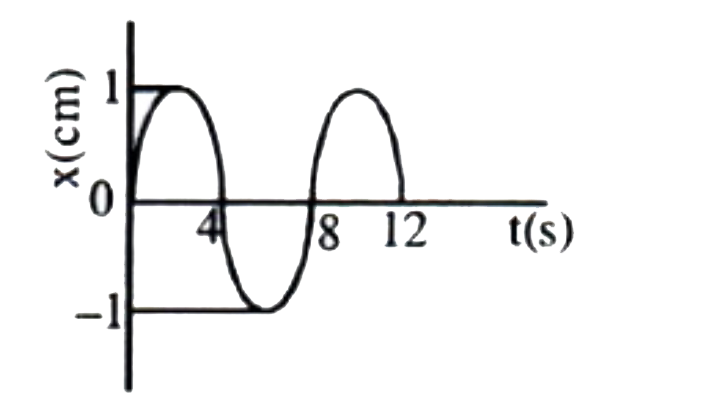(a) The motion of the particle in simple harmonic motion is given by x=asinωt. If its speed is u, when the displacement is x1 and speed is v, when the displacement is x2, show that the amplitude of the motion is
A=[v2x21−u2x22v2−u2]1/2
(b) A particle is moving with simple harmonic motion is a straight line. When the distance of the particle from the equilibrium position has the values x1 and x2 the corresponding values of velocity are u1 and u2, show that the period is
T=2π[x22−x21u21−u22]1/2
2π ⎷x21+x22V21+V22
2π ⎷x22−x21V21−V22
2π ⎷V21+V22x21+x22
2π ⎷V21−V22x21−x22
The correct Answer is:B
As we know for particle undergoing SHM
V=ω√A2+X2
v21=ω2(A2+x21)andV22=ω2(A2+x22)
On subracting the relations
V21−V22=ω2(x22−x21)
ω=
⎷V21−V22x22−x21
T=2π
⎷x22−x21V21−V21
Topper's Solved these Questions
- BOOK - A2ZCHAPTER - OSCILLATION AND SIMPLE HARMONIC MOTIONEXERCISE - AIIMS Questions24videos
OSCILLATION AND SIMPLE HARMONIC MOTION
- BOOK - A2ZCHAPTER - OSCILLATION AND SIMPLE HARMONIC MOTIONEXERCISE - Chapter Test29videos
OSCILLATION AND SIMPLE HARMONIC MOTION
- BOOK - A2ZCHAPTER - OSCILLATION AND SIMPLE HARMONIC MOTIONEXERCISE - Assertion Reasoning22videos
OSCILLATION AND SIMPLE HARMONIC MOTION
- BOOK - A2ZCHAPTER - NEWTONS LAWS OF MOTIONEXERCISE - Chapter Test30videos
NEWTONS LAWS OF MOTION
- BOOK - A2ZCHAPTER - PROPERTIES OF MATTEREXERCISE - Chapter Test29videos
PROPERTIES OF MATTER
Similar Questions
A particle is moving in SHM in a straight line. When the distance of the particle from equilibrium position has values x1 and x2 , the corresponding values of velocities are u1 and u2. Show that time period of vibration is T=2π[x22−x21u21−u22]1/2
View SolutionA particle moves with simple harmonic motion in a straight line. When the distances of the particle from the equilibrium position are x1 and x2, the corresponding velocities are u1 and u2. Find the period of the moton.
View Solution
Knowledge Check
- Question 1 - Select One or More
The phase of a particle executing simple harmonic motion is π2 when it has
AMaximum velocityBMaximum accelerationCMaximum energyDMaximum displacement - Question 2 - Select One
A partilce is executive simple harmonic motion given by
x=5sin(4t−π6)
The velocity of the particle when its displacement is 3 units isA2π3 unitsB5π6 unitsC20 unitsD16 units - Question 3 - Select One
A particle executing harmonic motion is having velocities v1 and v2 at distances is x1 and x2 from the equilibrium position. The amplitude of the motion is
A ⎷v21+x2−v22x1v21−v22B ⎷v21x21−v22x22v21+v22C ⎷v21x22−v22x21v21−v22D ⎷v21x22+v22x21v21+v22
The x-t graph of a particle undergoing simple harmonic motion is shown below. The acceleration of the particle at t=23s is
 View Solution
View SolutionA particle is executing simple harmonic motion with an amplitude A and time period T. The displacement of the particles after 2T period from its initial position is
View SolutionMaximum speed of a particle in simple harmonic motion is vmax. Then average speed of this particle in one time period is equal to
View SolutionThe displacement of a particle executing simple harmonic motion is given by
x=3sin(2πt+π4)
where x is in metres and t is in seconds. The amplitude and maximum speed of the particle isView SolutionA particle executes simple harmonic motion along a straight line with an amplitude A . The potential energy is maximum when the displacement is
View Solution

